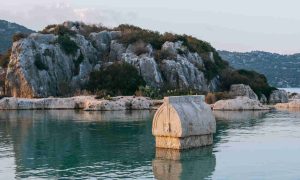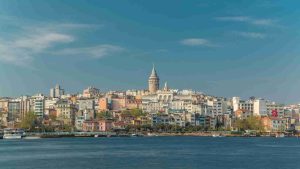The question of whether it is possible to visit the Hagia Sophia in Istanbul stems from the news that exploded in 2020: the government of Recep Tayyip Erdogan decreed that the Hagia Sophia in Istanbul be converted into a mosque and no longer considered a museum. And it is well known that, in general, visits to mosques are reserved for Muslim believers. The measure generated controversy also because it is a monument considered a World Heritage Site by Unesco, which left doubts about its compatibility with religious worship. Therefore, the situation is not always clear for all tourists, so in these lines we resolve the doubt.
Yes, it is possible to visit Hagia Sophia, but with these rules
Despite the fear on the part of international tourists that Hagia Sophia would no longer be open to everyone, Muslim or not, the new rules applied since January 2024, brought some relief to art and history lovers: yes, you can visit Hagia Sophia, but following a set of rules.
The first is that the temple remains closed during prayer. This occurs approximately one hour before and up to half an hour after each function. Friday is the longest prayer, approximately two hours at noon. And the rest of the days, the schedule and calendar is variable, so it is advisable to consult in each case.
The other rule that has caused some commotion is that now, non-Muslim visitors cannot access the prayer hall, i.e. the main hall, located on the first floor. Instead, they will have to move through the galleries located on a higher level. Therefore, they lose the majestic view that they had when they were just below the great dome, although the view of the whole is maintained and, in some cases, they gain more detail to contemplate the decoration.
A decoration that, by the way, is partly covered, since tarpaulins have been installed to hide the representations of the human and divine figures when viewed from the prayer room. On the other hand, from the gallery, these figures can be seen, for example, the Virgin and Child in one of the lateral semi-domes.
Hagia Sophia, a crossroads of cultures and difficult to manage
As with all temples that, for various reasons, retain elements of different religions, Hagia Sophia is difficult to manage, because whatever decision is made, there will always be a party that feels more aggrieved.
In this sense, this temple has always known how to adapt to every moment. It was born as a basilica in the time of Constantine (4th century), although the current construction dates from the time of Justinian (6th century). Its Byzantine mosaics are considered among the most spectacular in the History of Art, and that is why not all of them were covered or torn out after the conquest of the city by the Ottomans, and its subsequent use as a mosque.
Its use as a mosque was stopped at 1931, in the time of Atatürk, who was aware of the artistic symbolism of this temple and in line with his policy of separating religion and state. However, since the beginning of the 21st century it has regained its religious component, with a small prayer room and a call to prayer since 2013.
In any case, and to the surprise of many, she kept her name(Ayasofia, in Turkish), since in reality the term Saint Sophia did not refer to any Christian saint, but to the Divine Wisdom (which is its translation from Greek).
So if you want to visit Hagia Sophia, you can do it whatever your creed. And if you want someone to explain in detail the most important things, choose one of our tours that include the guided tour and entrance fees.



